The Pyramid of Caius Cestius is an ancient pyramid-shaped monument in the Testaccio neighborhood of Rome, Italy. It was built as a tomb for the Roman magistrate and priest Caius Cestius in 12 BC, during the reign of Emperor Augustus.
Today, the Pyramid of Caius Cestius is a popular tourist attraction, and its unique design and historical significance make it a must-see for visitors to Rome. The pyramid stands over 36 meters tall and is constructed of white marble and brick. It is one of Rome’s few surviving examples of ancient Egyptian-style pyramid architecture.
We think we took pictures of it daily since it was close to where we stayed in Rome in February 2023. This is why we knew we needed to write something about it.
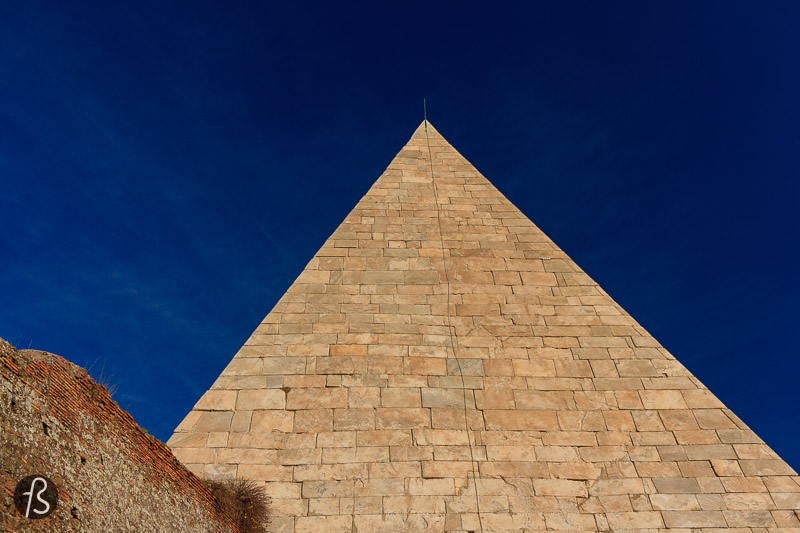
A bit of the history behind the Pyramid of Caius Cestius in Rome
When you visit Rome, it’s hard to escape the city’s deep and fascinating history, especially concerning the Romans’ obsession with everything Egyptian. This fascination is evident in the city’s architecture, with obelisks everywhere and Egyptian-inspired structures adorning public spaces. But one structure stands out, a towering white pyramid located just outside the old Roman city’s walls: the Pyramid of Caius Cestius.
The Pyramid of Caius Cestius, built between 18 and 12 BC, is a 36-meter-high pyramid constructed as a tomb for a wealthy Roman fascinated with everything Egyptian. Caius Cestius was a prominent politician, praetor, and priest who was so taken with Egyptian style that he left instructions in his will to be buried in a pyramid-shaped mausoleum. He gave them a tight deadline to ensure that his descendants would follow through on this request: the construction had to be completed within 330 days of his death.
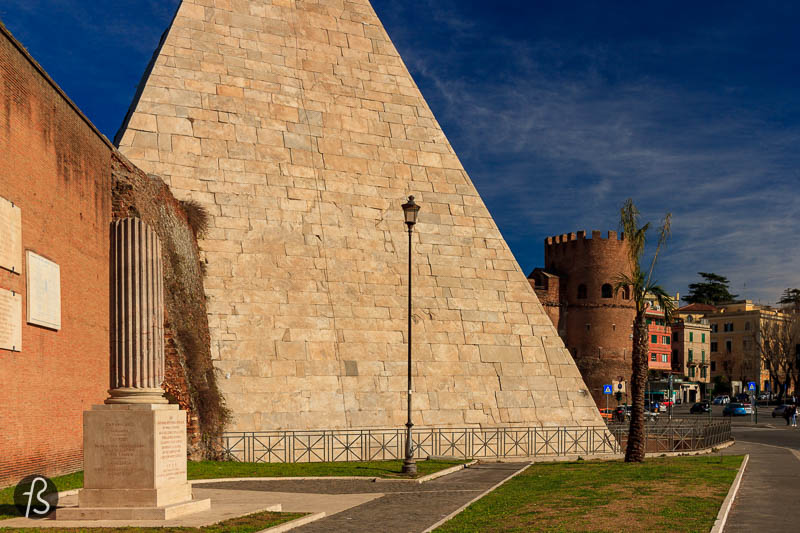
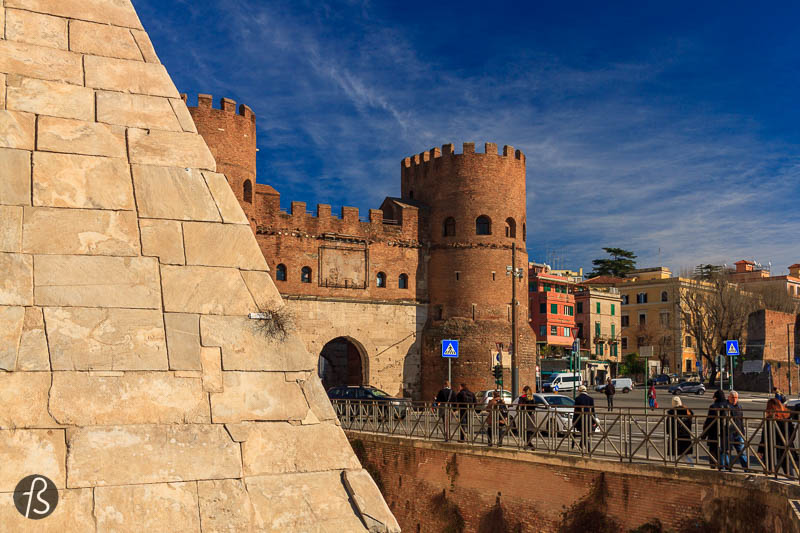
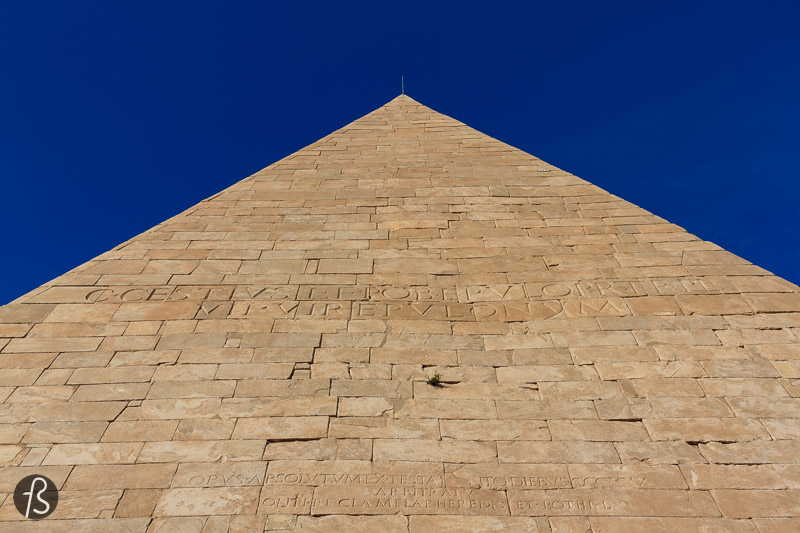
Remarkably, Cestius’ descendants rose to the challenge. The structure is made of brick and covered in white Carrara marble, and the exact words of Cestius’ will are inscribed on its sides. Visitors to the Pyramid of Cestius can still see these inscriptions, which tell the story of Cestius’ life and final wish.
Originally the pyramid was situated outside the city walls that surrounded Rome. Today, it is located at a busy traffic intersection near a train station but was once surrounded by stately columns and two bronze figures.
One of the most exciting things about the Pyramid of Cestius is that it wasn’t actually based on the most famous pyramids of Giza. Instead, its design owes more to Nubia’s pyramids, a region now part of Sudan. The sharp angles of the pyramid’s sides that you can see in the pictures here, which rise to a severe point at the top, are typical of Nubian pyramids. However, the Romans would likely have seen little difference between the various types of Egyptian pyramids, and we don’t think they cared much about replicating something like this perfectly. For them, everything that came out of Egypt was fashionable and exotic.
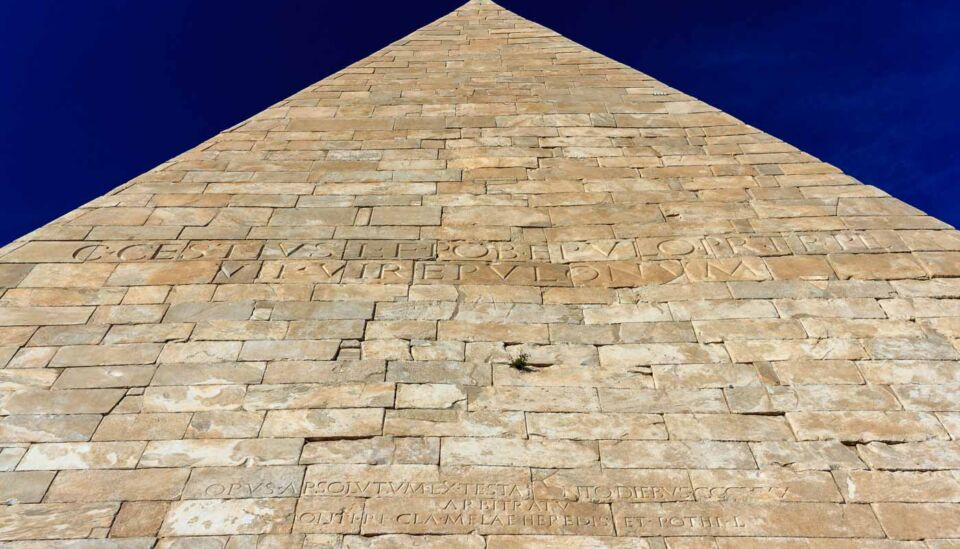
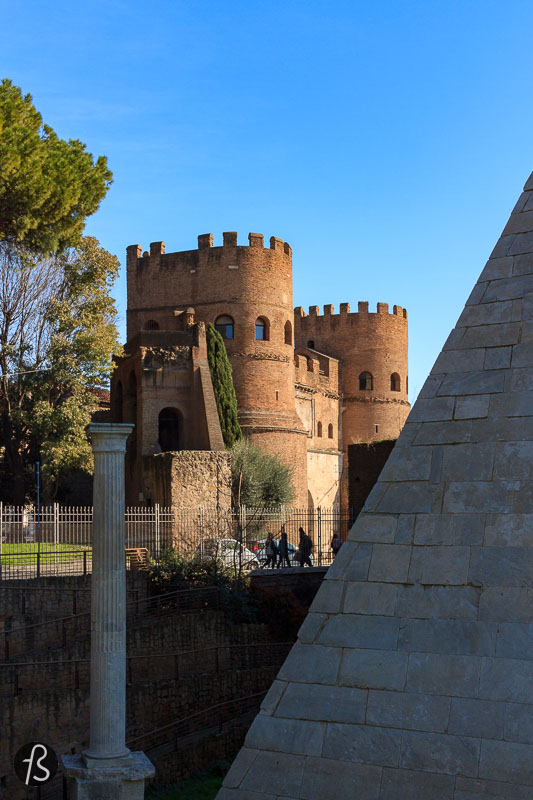
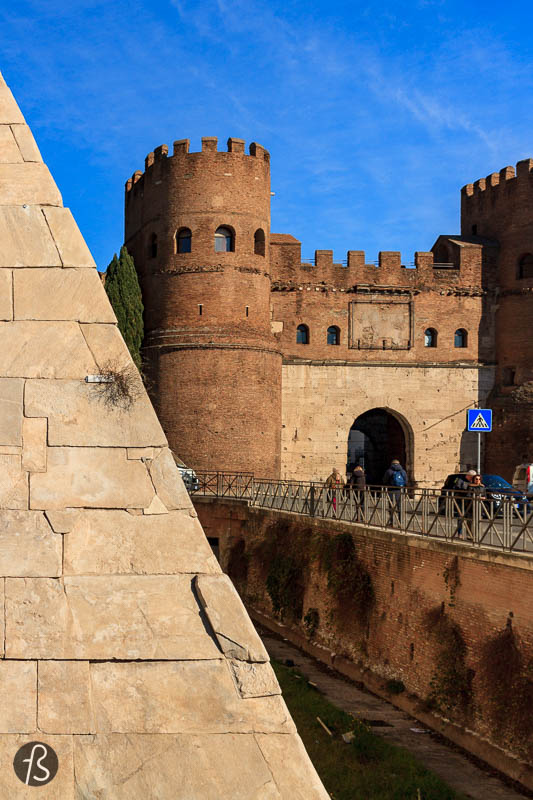
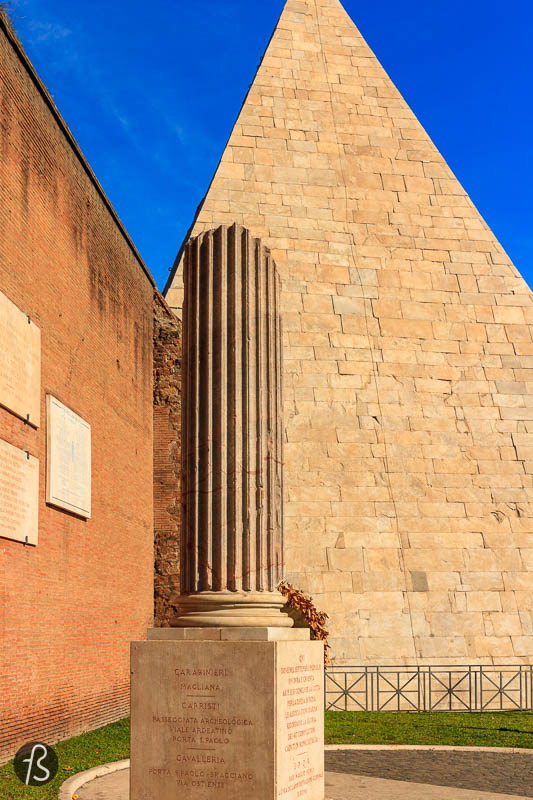
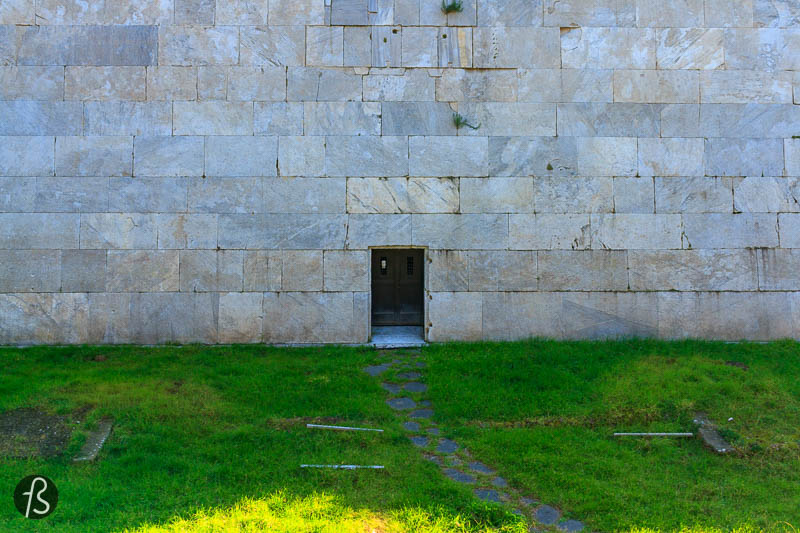
What are the inscriptions on the Pyramid of Caius Cestius?
The inscriptions on the southeast side of the pyramid read: “Gaius Cestius Epulo, son of Lucius, of the Poblilian district, praetor, tribune of the people, an official of the public banquets. According to his will, this work was completed in three hundred and thirty days; it was executed by his heirs L. Pontus Mela, son of Publius, of the Claudian district, and his freedman Pothus.“
Inside the Pyramid of Caius Cestius
The pyramid is constructed of brick and cement and covered in white marble, with the tomb’s interior decorated initially with lively frescoes. But only some of these frescoes have survived, giving visitors a glimpse of what the interior would have looked like when Cestius was laid to rest.
The room is barrel-vaulted. This means that its ceiling is made up of a series of arches that create a rounded, tunnel-like effect. The tomb was built into the fortifications of the Aurelian walls in 271-275, which likely helped it survive the centuries.
You can visit the tomb inside the pyramid, but the place wasn’t open when we visited Rome. We believe it is one place still closed due to the COVID-19 pandemic. Maybe, it will open again soon, so you can check out their website to book your visit.
Interestingly, the Pyramid of Caius Cestius was not the only pyramid in Rome. In the 1st century BC, two pyramids were constructed where the twin churches of Piazza del Popolo stand today, and another was along Via della Conciliazione.
The latter was known as the Meta Romuli and was mistakenly identified as the tomb of Remo, the twin brother of Rome’s founder, Romolo. In 1499, it was demolished by Pope Alexander VI Borgia on the occasion of the Jubilee. However, the Pyramid of Caius Cestius still stands today as a testament to the enduring influence of ancient Egyptian culture on Rome.
Visitors to Rome can see a plethora of ancient Egyptian obelisks on display across the city, but the Pyramid of Caius Cestius is the only pyramid to be found. Its unique blend of Roman and Egyptian styles makes it a must-see attraction for anyone interested in history, architecture, or culture.
To go around the Pyramid of Cestius, you must go inside the Aurelian walls to the Protestant Cemetery on the northwest side, where the pyramid can be viewed with less traffic.
One curious thing about the cemetery is that Mary Shelley’s husband is buried there. Percy Bysshe Shelley died after a boating accident; his body was cremated on a beach, and his ashes were buried in the Protestant Cemetery of Rome.
Once we started researching the pyramid and Percy Bysshe Shelley, we found out that Thomas Hardy wrote a poem about the pyramid, and we thought his name was familiar to one of our trips.
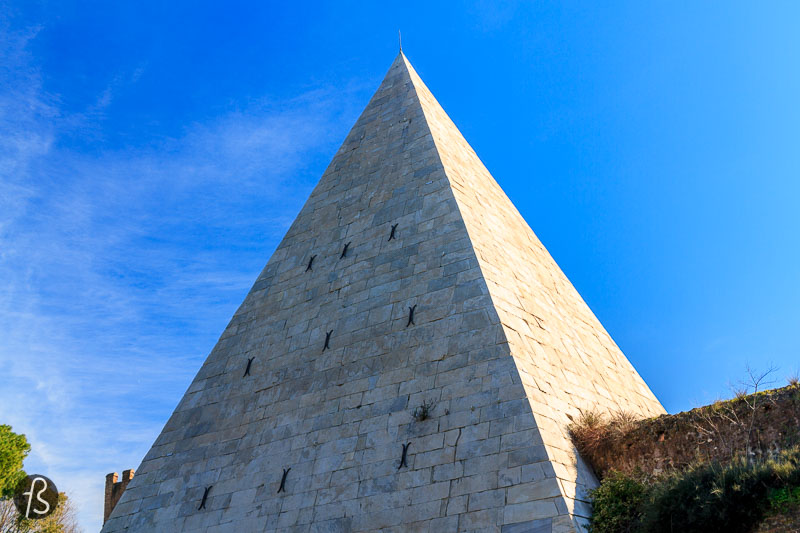

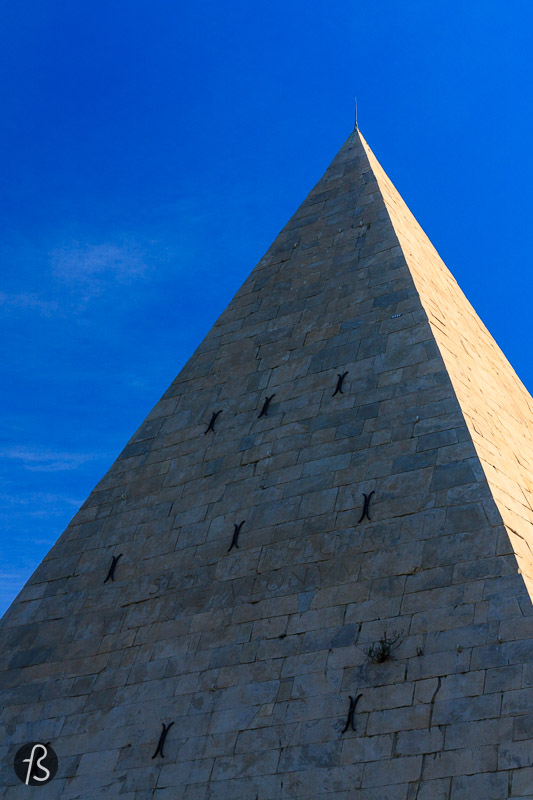
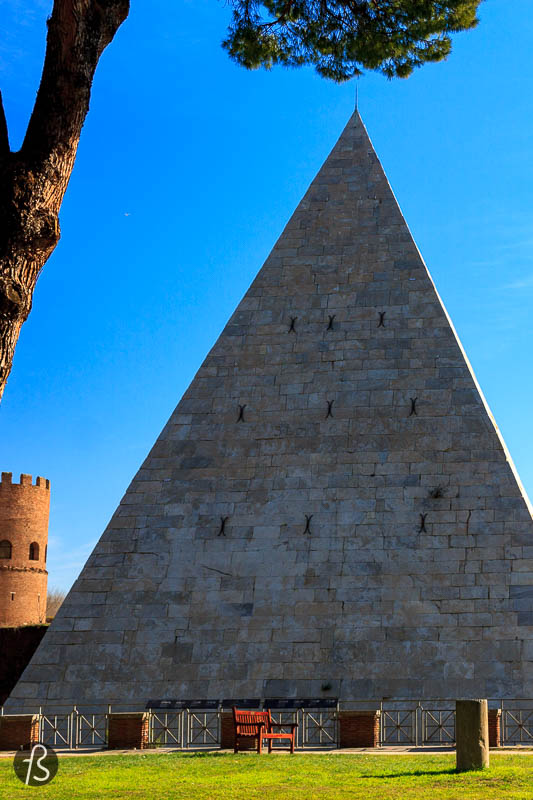
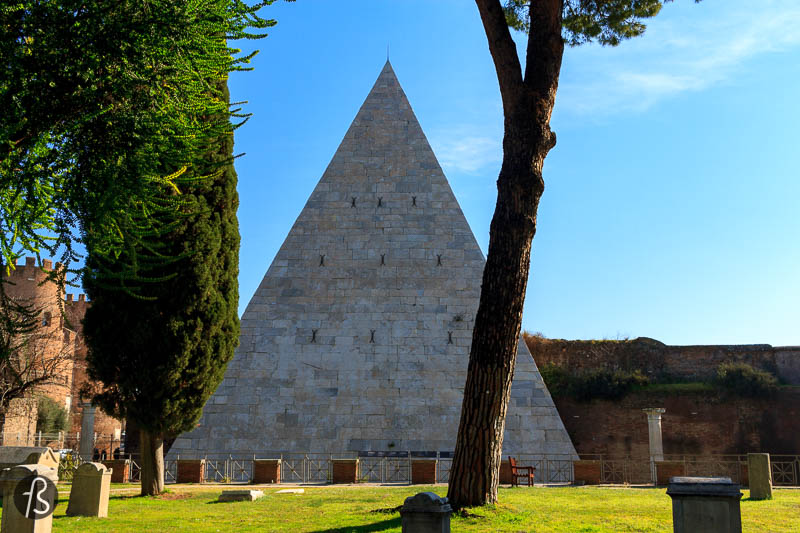
After a few minutes, we realized we knew him from the Hardy Tree at the St Pancras Old Church in Central London. This cemetery is also connected to Mary and Percy Shelley since this is where Mary Wollstonecraft, Mary Shelley’s mother, was first buried.
Also, this is where Mary and Percy started meeting each other secretly, and Mary lost her virginity to Percy in June 1814, which tradition claims happened in the churchyard.
This has nothing to do with the pyramid of Caius Cestius, but we thought it was interesting to see how everything feels connected somehow.
Who, then, was Cestius,
And what is he to me? –
Amid thick thoughts and memories multitudinous
One thought alone brings he.I can recall no word
Of anything he did;
For me he is a man who died and was interred
To leave a pyramid
Rome At The Pyramid Of Cestius Near The Graves Of Shelley And Keats (1887) Poem by Thomas Hardy
The Pyramid of Caius Cestius is an outstanding example of the influence of ancient Egyptian culture on the Roman Empire. Its unique design and well-preserved condition make it a rare gem, and its incorporation into the Aurelian Walls demonstrates its importance in protecting the city. It is a must-see attraction for visitors to Rome.
If you plan a trip to Rome, add the Pyramid of Caius Cestius to your itinerary – you won’t be disappointed!
You can find the Pyramid of Caius Cestius on the map below. It’s easy to arrive at the location since the Piramide subway station is nearby. Also, Roma Porta S. Paolo is a train station next to it. It’s easy to get there and visit this unusual piece of history.
The Pyramid of Caius Cestius in Rome
Via Raffaele Persichetti, 00153
Roma RM, Italy